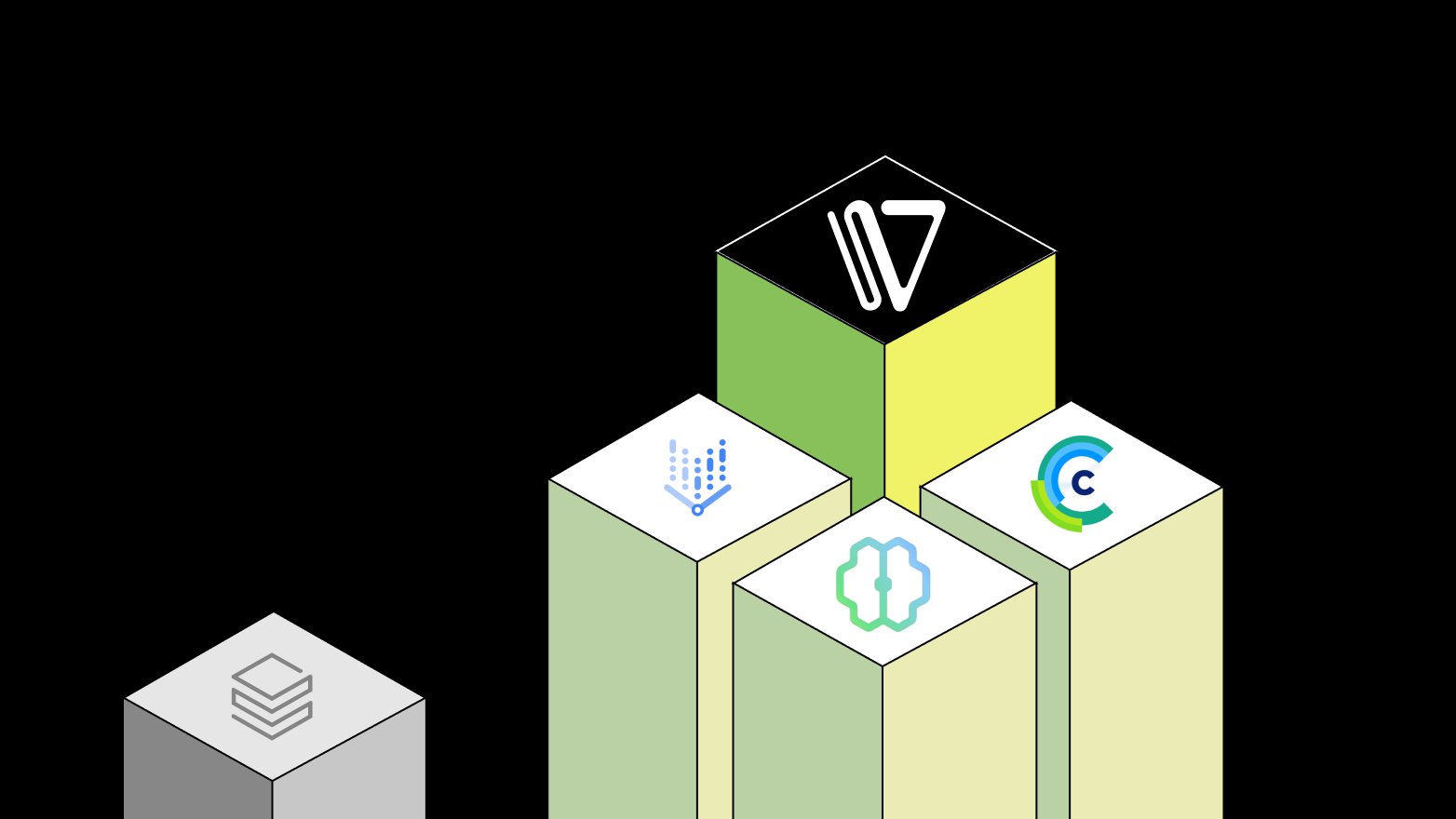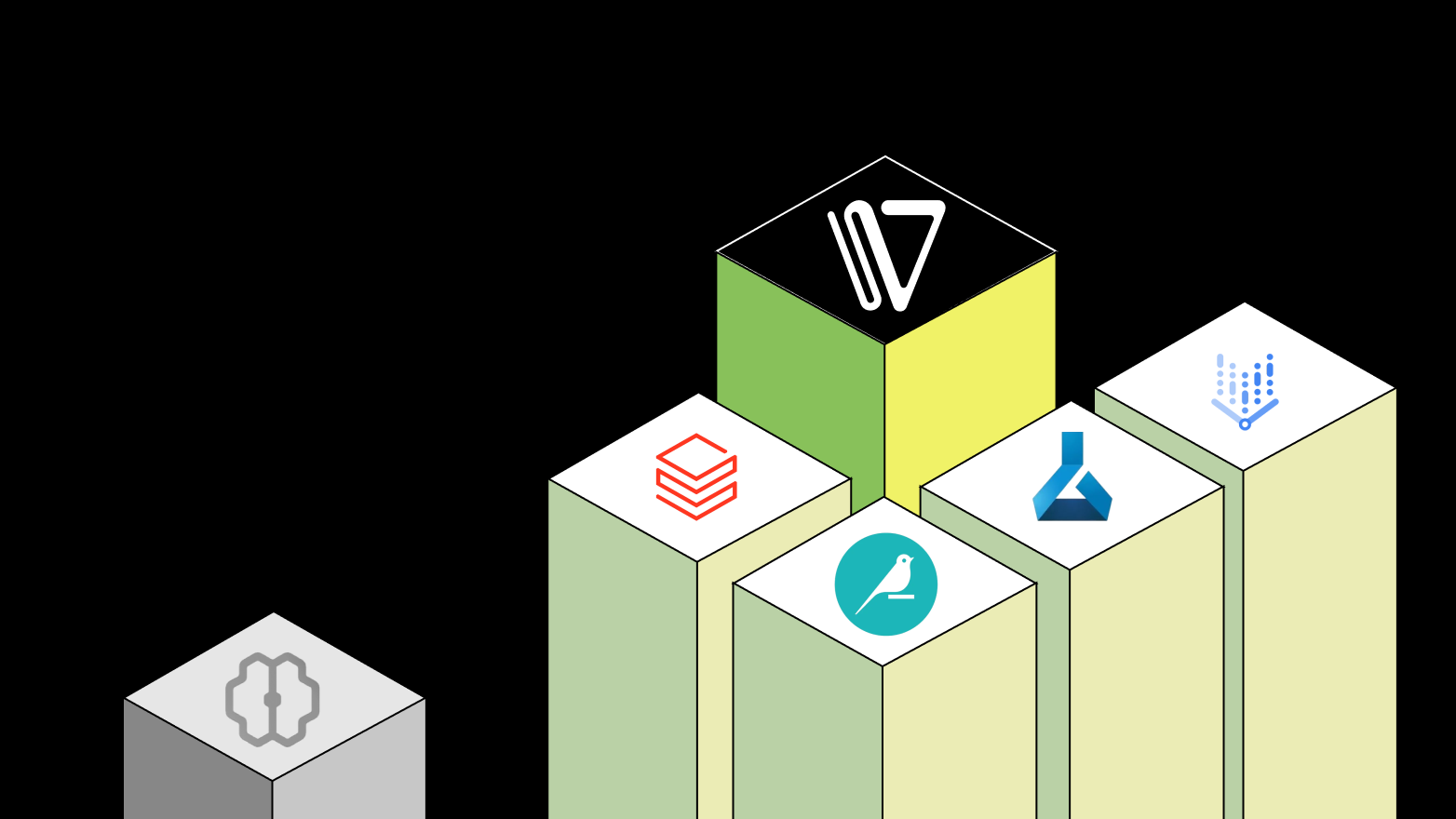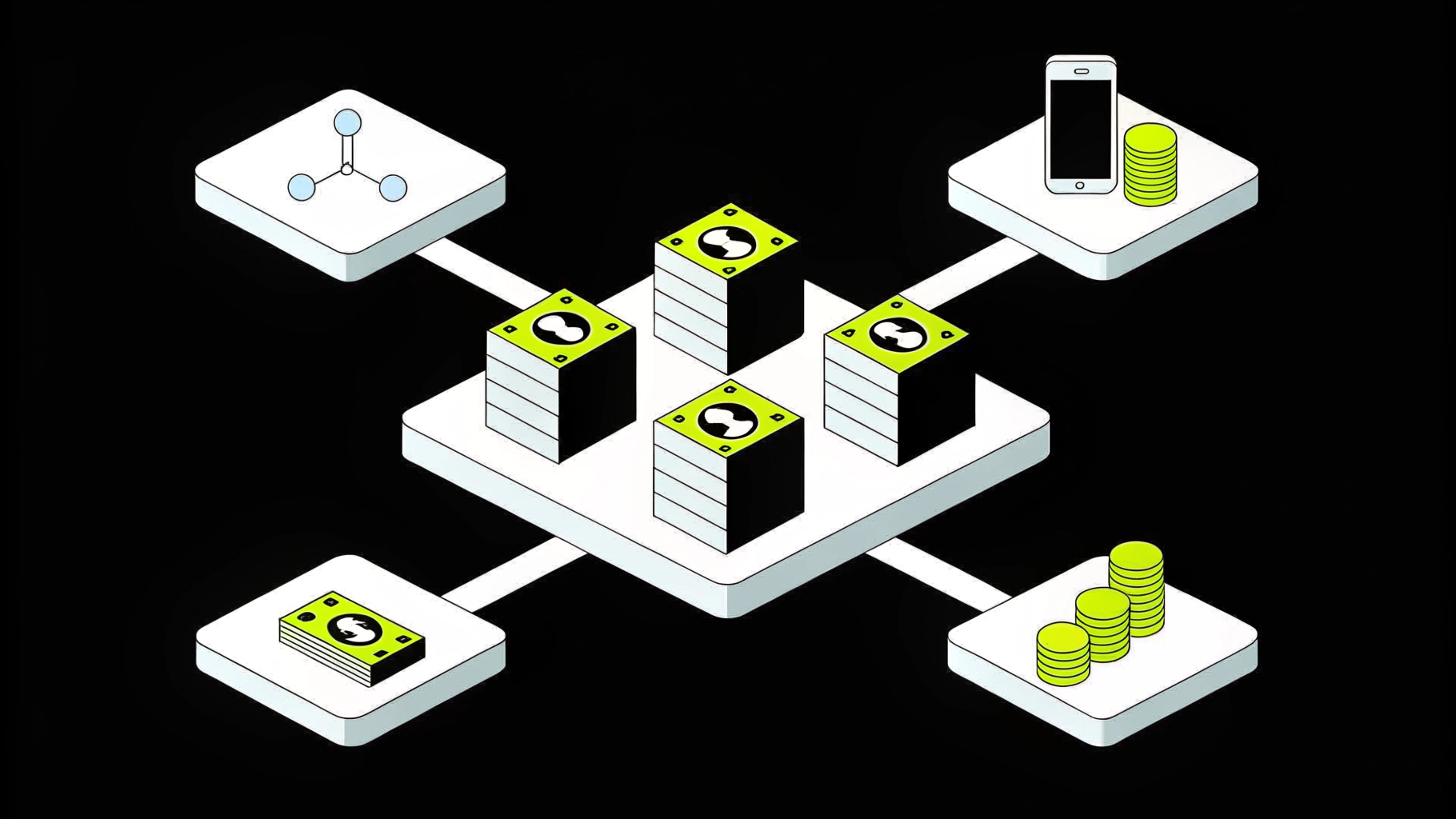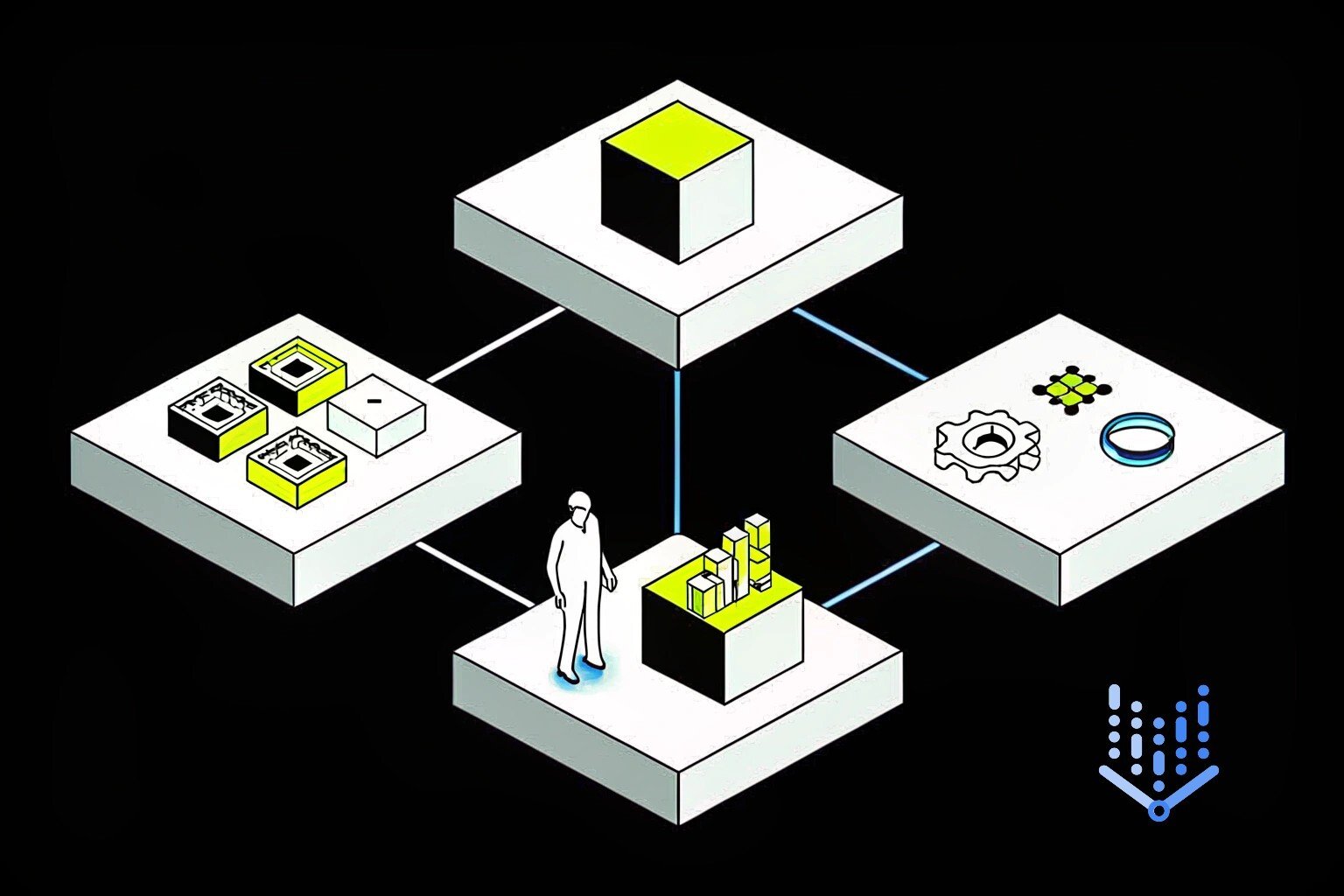Real-World AI Applications: Transforming Industries

There’s no shortage of hype around artificial intelligence (AI). But the real story isn’t just about models or algorithms—it’s about AI applications. These are the concrete, practical uses of AI that are already transforming how businesses operate, how decisions get made, and how consumers interact with technology. From early disease detection to smarter inventory management, AI applications are solving real problems every day.
In this guide, we’ll break down what powers AI, how it works in practice, and where you’re most likely to see AI applications making a difference. Whether you’re looking to improve business efficiency, enhance customer experience, or unlock new value from your data, understanding AI applications is the first step.
Key takeaways
- Understand what makes AI applications work. At their core, these systems learn from data to mimic human intelligence, enabling everything from chatbots to predictive analytics.
- Use AI applications to improve efficiency, decision-making, and customer experiences. Integrating AI responsibly, with a focus on fairness and privacy, is key to long-term business value.
- Track new developments in AI technologies like NLP and computer vision. Keeping up with emerging AI applications helps you stay ahead of competitors and spot new opportunities for innovation.
What powers AI applications?
So what makes AI applications different from traditional software? It starts with their ability to learn and adapt. While conventional programs follow fixed rules, AI applications improve as they encounter more data. They can spot patterns, recognize context, and generate predictions—without needing to be manually reprogrammed each time.
At a technical level, most AI applications are powered by a combination of machine learning (ML), neural networks, and data pipelines. For example, artificial neural networks help simulate human cognition by mimicking the brain’s structure. That’s what enables applications like reinforcement learning or real-time image recognition.
These systems aren’t static. The best AI applications get more accurate and more useful over time—whether it’s recommending content, catching fraudulent transactions, or making sense of unstructured customer feedback.
AI applications by industry: from buzzword to business value
Today’s AI applications are doing more than powering novelty features—they’re quietly reengineering how industries work. Companies are using AI to solve complex problems, automate time-consuming tasks, and surface insights that would otherwise stay hidden.
And they’re not limited to one field. Healthcare, finance, retail, transportation, insurance—they’re all seeing measurable gains from targeted, well-deployed AI applications.
Let’s explore how real-world AI applications are delivering value across sectors:
Healthcare: AI applications in diagnosis and treatment
AI is revolutionizing patient care across the board—not just in diagnostics, but also in how treatments are developed, delivered, and managed. These applications are helping medical professionals work more accurately and efficiently while improving outcomes for patients. From automating routine analyses to unlocking insights from massive datasets, AI applications are becoming essential tools in modern healthcare. Key examples include:
- Detecting cancer in medical imaging
- Building individualized treatment plans
- Accelerating drug discovery
- Powering robotic-assisted surgeries for improved precision
These AI applications reduce diagnostic errors, save time for clinicians, and improve patient outcomes.
Finance: fraud detection and investment AI applications
AI applications are transforming the financial services industry by improving both customer-facing services and back-end operations. With large volumes of data moving through complex systems every second, financial institutions rely on AI to make sense of it all in real time. Whether it’s enhancing fraud detection, optimizing investment strategies, or improving compliance, AI applications enable smarter, faster, and more secure decision-making. Financial institutions use AI applications to:
- Detect and block fraudulent transactions in real time
- Automate underwriting and credit risk scoring
- Provide robo-advisors that personalize investment strategies
- Enable algorithmic trading systems that adapt to market signals
By embedding AI into their workflows, firms gain speed, security, and data-driven insights.
Manufacturing: AI applications streamline production and quality
In manufacturing, AI applications are helping companies move faster and smarter. From reducing downtime to catching defects before products reach customers, these tools are reshaping production lines. AI is no longer just about automation—it’s about intelligent automation, where machines not only execute tasks but optimize them in real time.
Examples of AI applications in manufacturing include:
- Predictive maintenance using sensor data to forecast equipment failures
- AI-powered robotic assembly for precision and speed
- Digital twins and virtual prototyping to refine product designs
These AI applications translate into higher throughput, better quality, and more resilient operations.
Retail: personalized AI applications enhance customer engagement
Retailers are embracing AI applications to understand, predict, and serve their customers better than ever before. Whether online or in-store, today’s shopping experience is increasingly shaped by algorithms that can recommend products, forecast demand, and tailor promotions in real time.
Key AI applications in retail include:
- Recommendation engines based on purchase and browsing behavior
- Virtual assistants and chatbots for personalized service
- Predictive inventory and pricing models for supply chain agility
These tools not only improve conversion rates but also enhance customer satisfaction and loyalty.
Transportation: AI applications drive smarter, safer mobility
Transportation and logistics companies are turning to AI applications to improve efficiency, safety, and route optimization. These tools are especially powerful in industries where time, cost, and precision are critical.
Examples of AI applications in transportation include:
- Autonomous vehicle systems powered by real-time perception and planning
- Traffic optimization software for smarter urban mobility
- AI-enhanced logistics platforms that improve delivery speed and reduce fuel use
As these applications scale, they’re laying the groundwork for a more connected and sustainable mobility future.
Insurance: AI applications modernize underwriting and claims
Insurance companies have traditionally relied on manual processes and risk models based on limited datasets. AI applications are changing that, enabling faster decisions, better risk assessments, and more personalized service.
Common AI applications in insurance include:
- Automated claims processing using document and image analysis
- Risk modeling with broader and more relevant data sources
- Real-time fraud detection to flag suspicious claims
- AI-powered chatbots that handle policy updates and customer inquiries
These applications help insurers reduce costs, accelerate turnaround times, and improve customer trust.
Everyday AI applications: how AI shows up in daily life
AI isn’t just powering major industry shifts—it’s already woven into the apps, services, and tools we use every day. While you might not always see it, AI applications are working behind the scenes to personalize your experiences, save you time, and keep you safer online.
Let’s take a look at some of the most common day-to-day AI applications:
Voice assistants and smart homes
If you’ve ever asked Siri for directions, told Alexa to play a song, or used Google Assistant to set a timer, you’ve used AI. These voice-powered assistants rely on natural language processing (NLP) to understand your requests and deliver relevant actions.
Smart home tech—like thermostats that learn your preferences or cameras that distinguish between familiar faces and strangers—are AI applications designed to simplify routines and enhance security.
Streaming, shopping, and social feeds
Netflix knows what show to suggest next. Spotify serves up the perfect playlist. Amazon recommends your next favorite product. These are AI recommendation systems at work, powered by your behavior and patterns from millions of users like you.
AI applications also personalize what you see on social platforms, improving engagement while (sometimes) raising new questions around bias, echo chambers, and content moderation.
Email, navigation, and cybersecurity
Spam filters that catch junk. Navigation apps that reroute you around traffic. Antivirus software that flags threats in real time. These quiet but essential AI applications help keep your digital life flowing smoothly and securely.
In education, platforms like Duolingo or Khan Academy use AI to personalize lessons based on how you learn best, making everyday skill-building more effective.
AI applications aren’t just for Big Tech—they’re becoming increasingly accessible to organizations of all sizes.
AI applications for business: where the value lies
Thinking about how AI can benefit your business? AI applications aren’t just for Big Tech—they’re becoming increasingly accessible to organizations of all sizes. Platforms like Cake provide end-to-end infrastructure for managing AI workloads, helping teams go from experimentation to production with less friction.
Here are four key ways AI applications drive business value:
Operational efficiency and productivity
AI applications help automate routine work so your team can focus on what matters. From invoice processing to IT ticket triage, AI reduces the load on human teams while increasing consistency and speed.
Data-driven decision making
Instead of guessing, AI applications help you act on data. They analyze massive datasets, find trends, and generate insights—all in a fraction of the time it would take a human. The result: faster, more confident decision-making.
Better customer experiences
AI applications improve the way you connect with customers. Chatbots, recommendation engines, and personalized content delivery systems all help tailor your customer journey while keeping support available 24/7.
Risk mitigation and fraud detection
AI applications can identify patterns that humans might miss, like fraudulent activity, credit risk anomalies, or compliance issues. These early warnings help you stay proactive and protect your bottom line.
Emerging AI applications to watch
The next generation of AI applications will be even more powerful, capable, and context-aware, ushering in new possibilities that go far beyond task automation. These innovations are enabling systems to reason, adapt, and interact with the world in more human-like ways. With increasing access to real-time data, edge computing, and advanced foundation models, AI applications are evolving into agents that can proactively support decision-making, manage complex workflows, and deliver deeply personalized experiences. Here are a few key areas where innovation is rapidly unfolding:
AI-powered analytics
Modern analytics is no longer just about dashboards and reports. AI-powered analytics tools can automatically surface insights, detect anomalies, and identify trends in massive datasets, without requiring data science expertise. These tools are helping businesses move from reactive reporting to proactive decision-making.
The next generation of AI applications will be even more powerful, capable, and context-aware, ushering in new possibilities that go far beyond task automation. These innovations are enabling systems to reason, adapt, and interact with the world in more human-like ways.
Forecasting and predictive modeling
AI applications are transforming how organizations anticipate and plan for the future. Instead of relying on static historical trends, AI forecasting systems dynamically incorporate new data to adjust predictions in real time. From demand forecasting in retail to capacity planning in operations, these tools increase accuracy and agility.
Agentic AI and intelligent assistants
Agentic AI represents a major leap forward in how we interact with software. These are AI applications that don’t just respond—they take initiative, reason through complex tasks, and work across tools to complete goals. From customer support to internal automation, AI agents can handle multi-step workflows and escalate when human judgment is needed.
- Read: Agentic AI explained
Conversational AI
Beyond basic chatbots, AI agents are becoming fully capable digital assistants. They understand context, perform tasks, and adapt to users over time, from customer service to internal workflows.
Computer vision
AI that "sees" is now being used in everything from autonomous vehicles to medical diagnostics. These vision-based AI applications analyze images and video to interpret the world and take action.
Robotics and physical automation
Pairing AI with robotics is transforming industries like logistics, manufacturing, and even healthcare. These applications enable robots to operate autonomously, collaborate with humans, and adapt to dynamic environments.
Ethical AI applications: building trust and accountability
As AI applications become more embedded in everyday life, ethical design matters more than ever. That includes:
Data privacy
As AI applications depend heavily on data, protecting user privacy must be a foundational principle. Organizations need to ensure that personal information is collected, stored, and processed in ways that are transparent, secure, and compliant with data protection laws. This includes minimizing data collection, using anonymization where possible, and being clear with users about how their data will be used. Transparent policies and regular audits help maintain public trust while avoiding legal and reputational risks.
Algorithmic fairness
AI systems are only as fair as the data they learn from. Without proper oversight, AI applications can reinforce existing biases, leading to unequal outcomes in areas like hiring, lending, or healthcare. Fairness in AI means rigorously testing for bias in training data, implementing safeguards during model development, and monitoring real-world outputs for signs of discrimination. Ethical AI development requires diverse teams, representative datasets, and accountability mechanisms to ensure that algorithms serve all users equitably.
Workforce impact
AI will inevitably reshape the workforce, automating some tasks while augmenting or transforming others. Rather than viewing this change solely as a risk, forward-thinking organizations are using it as an opportunity to invest in people. Reskilling and upskilling programs can help employees transition into higher-value roles and work alongside AI systems more effectively. The future of work isn’t about humans vs. machines—it’s about building partnerships where intelligent tools empower human creativity, judgment, and collaboration.
Building trustworthy AI applications isn’t just the right thing to do—it’s essential for long-term adoption and success.
Why Cake is built for AI applications
If you’re looking to turn AI from theory into impact, Cake was designed for exactly that. Cake is a modern AI infrastructure platform that makes it easy for teams to build, deploy, and scale AI applications using open-source tools, without the complexity of managing everything in-house.
With Cake, you get a fully managed environment that supports your entire AI stack—from compute and orchestration to monitoring and compliance—so you can focus on building valuable applications instead of stitching together infrastructure. It’s cloud-agnostic, modular, and secure by design.
Here’s how Cake supports real-world AI applications:
- Production-ready AI workflows: Go from prototype to production without rewriting your stack. Cake provides pre-integrated pipelines and scalable infrastructure to get your models running faster.
- Access to open-source innovation: Integrate best-in-class OSS tools like Ray, MLflow, and KServe. Cake stays current so your team can adopt the latest advancements without vendor lock-in.
- Security and compliance built in: Whether you’re operating in finance, healthcare, or insurance, Cake includes identity, observability, and policy management to help you meet regulatory requirements.
- Cloud flexibility: Run AI workloads on any cloud or on-prem, and optimize compute resources to reduce costs.
Whether you’re building intelligent agents, deploying computer vision models, or personalizing user experiences at scale, Cake helps teams move faster, with less risk and more control.
The future of AI applications
AI applications are no longer optional; they’re quickly becoming essential to competing in a digital-first world. As generative AI, edge computing, and open-source tooling evolve, businesses will have more opportunities than ever to embed intelligence into every part of their operation.
The challenge—and the opportunity—is making these tools work for you.
For forward-thinking teams, platforms like Cake offer the flexibility, security, and modular infrastructure to bring cutting-edge AI applications to life without the typical complexity. Whether you’re looking to build custom agents, run ML workloads on any cloud, or integrate the latest open-source tools, Cake can help you move faster, stay compliant, and stay ahead.
Related articles
- Enterprise-grade Frontier AI, Fast
- Why I Co-Founded Cake: Unlocking Frontier AI for Everyone
- Inside Cake's AI Development Platform
- AIOps, Powered by Cake
Frequently asked questions
What’s a good first step to explore AI applications for my business?
Start with a specific, high-impact area like customer service, data analytics, or process automation. Identify a clear use case, then pilot an AI application to evaluate results.
Do I need a team of AI engineers to get started?
No. Many platforms now offer pre-built components and managed infrastructure, making it easier for smaller teams to deploy AI applications without deep in-house expertise.
What if our data is messy or incomplete?
You’re not alone. Many AI applications include tools for cleaning and preparing data. You can also start by improving data hygiene incrementally as part of your AI strategy.
How can we ensure our AI applications are ethical?
Prioritize transparency, review training data for bias, and implement ongoing monitoring. Be clear with users about how their data is used and build checks into your workflows.
How do we future-proof our investment in AI applications?
Choose flexible, cloud-agnostic platforms that evolve with the ecosystem. Embrace modularity so you can integrate the latest tools as they emerge.
About Author

Cake Team
More articles from Cake Team
Related Post

Top Databricks Alternatives for Modern AI Development in 2025

Cake Team

Beyond SageMaker: AI Platforms Built for Speed, Data Control, and Security

Cake Team

Save $500K–$1M Annually on Each LLM Project with Cake

Cake Team

Google Vertex Alternatives: Portability, Compliance, and Control

Cake Team